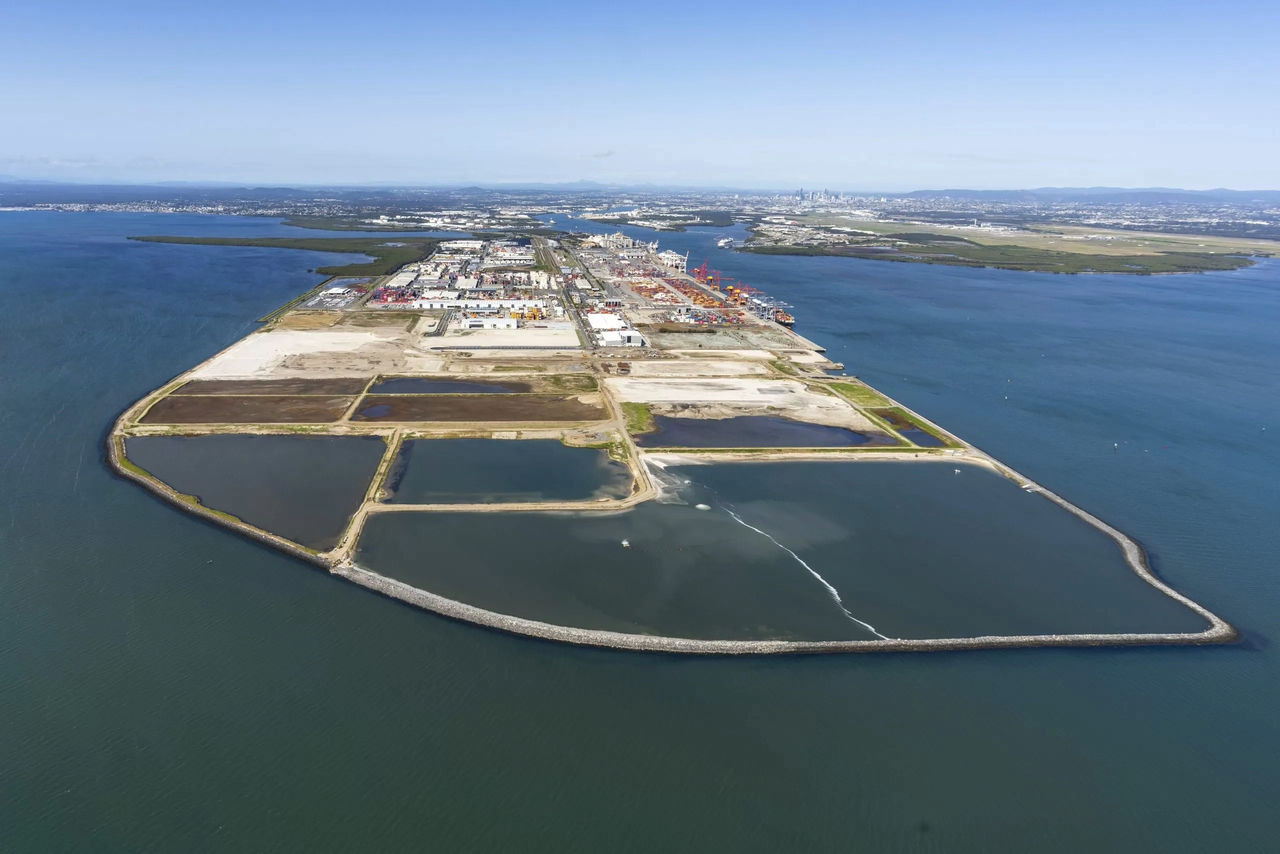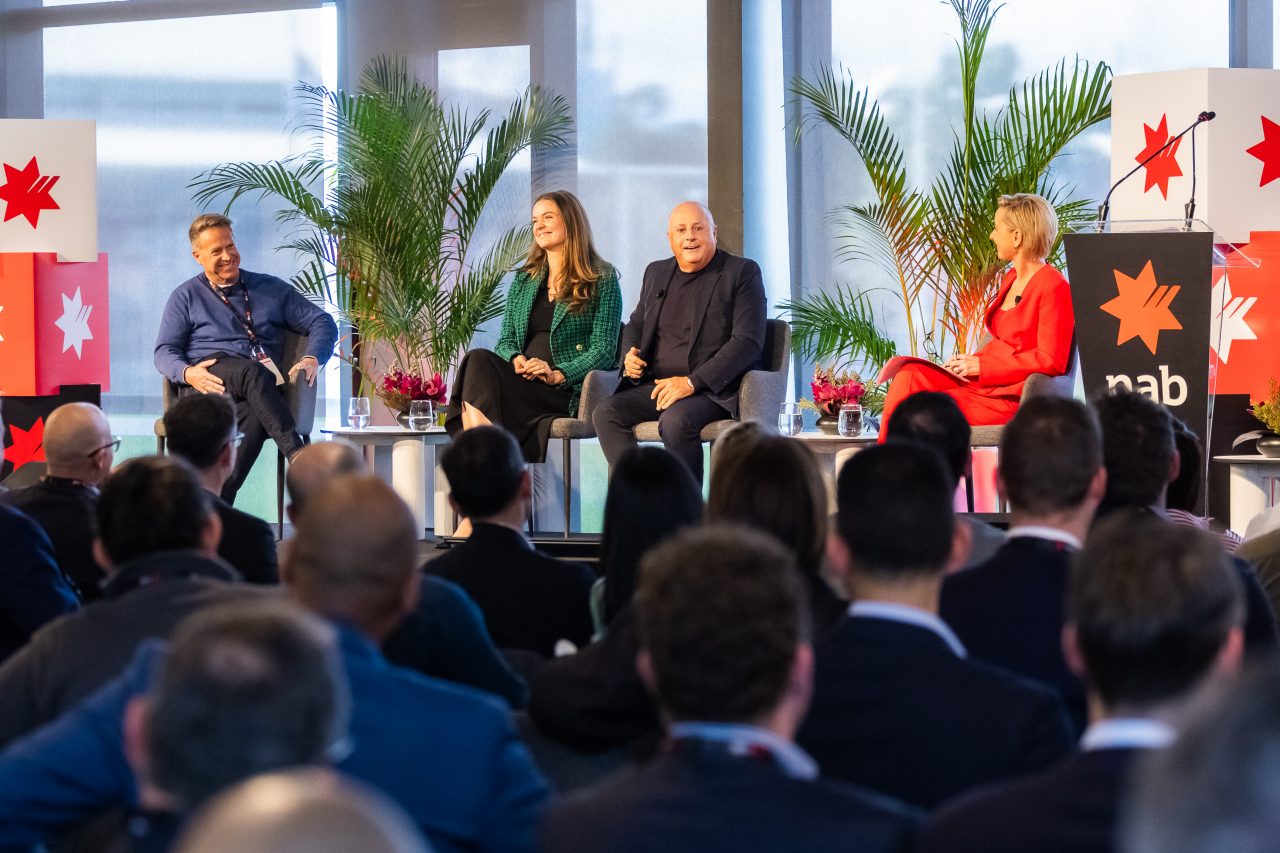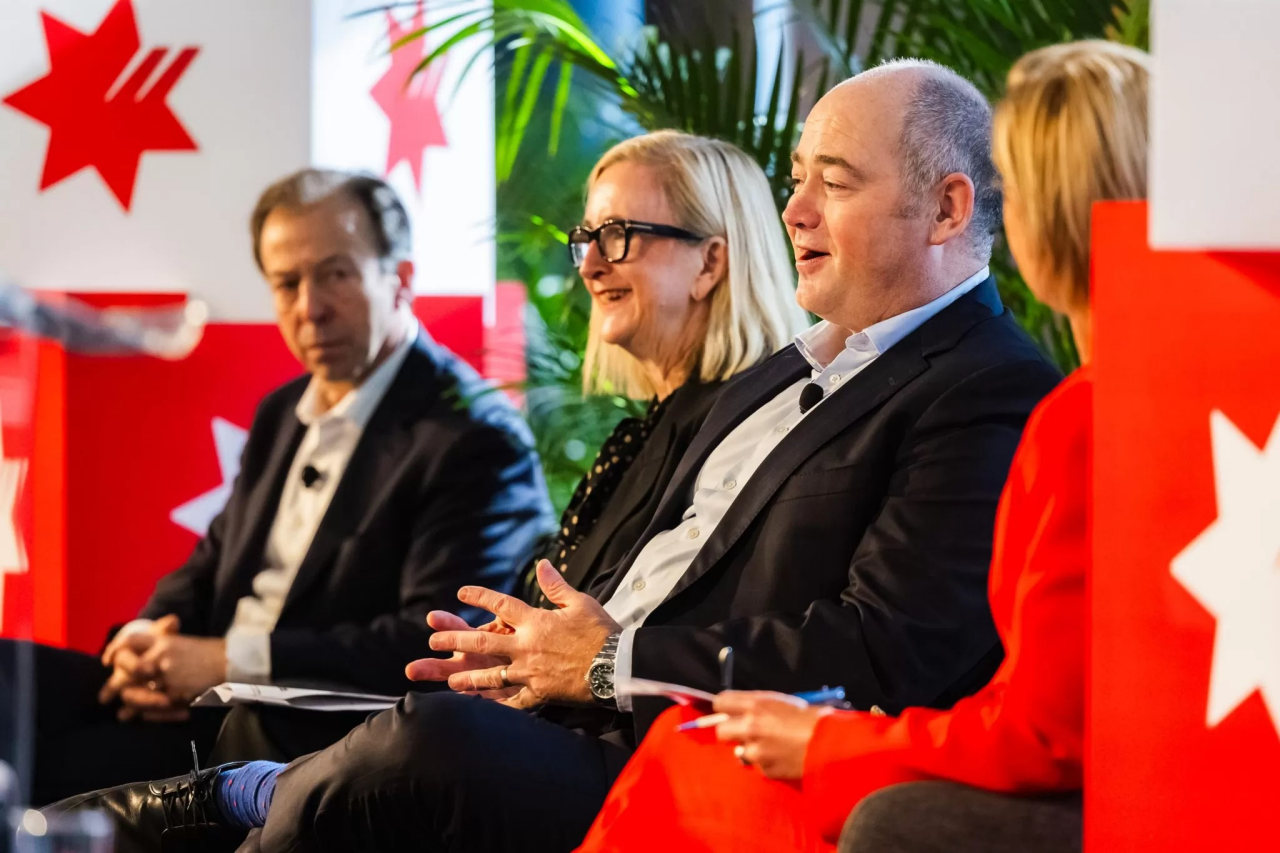Unconstrained by budgets or financial commitments, the Port of Brisbane’s Vision 2060 report peers into the future, bringing the routine topic of logistics to life by imagining airships delivering outsized cargo directly to customers.
If nothing else, it would alleviate congestion and deliver large payloads with zero-emissions efficiency.
The real purpose of Vision 2060, however, is to ensure the port strengthens Queensland’s economic future, transitions to a more sustainable and productive operation, and future-proofs trade to the extent that’s possible in the current, volatile environment.
The growth projections for Port of Brisbane are ambitious out to 2060, with the Queensland population forecast to lift from 5.5 million to 8.3 million, container trade to treble, cruise passenger volumes to more than quadruple, and energy demand to potentially increase ten-fold as the broader port community seeks to decarbonise.
“It’s a lofty ideal, absolutely, but one thing about the Port of Brisbane is it’s a node in a critical logistics chain,” chief executive Neil Stephens said.
“If the port doesn’t function efficiently for all its communities, the Queensland economy is not going to go so well – we’ve seen that time and again in floods and shutdowns, and with (Cyclone Alfred in March 2025) the first cyclone to hit Brisbane in 52 years, severely restricting shipping for around five days and shutting down operations at the Port of Brisbane for two days.
“It’s then you see empty shelves and exports building up because they can’t find a way out to the rest of the world, so we talk a lot about the resilience of what we can control and influence, as well as our flexibility and adaptability. Increasingly, it’s about asset recoverability as well.”
Port of Brisbane Pty Ltd (PBPL) manages and develops the port under a 99-year lease from the Queensland Government and has spent around $1.8bn on capital works since the port’s privatisation in 2010.
PBPL is owned by the APH consortium, which includes four of the world’s largest infrastructure investors - Caisse de dépôt et placement du Québec, IFM Investors; QIC Private Capital on behalf of its managed funds, and the Abu Dhabi Investment Authority.
Located at the mouth of the Brisbane River about 22kms from the Brisbane CBD, is Australia’s third largest container port and one of its most diverse multi-cargo ports, handling $72bn in international trade in 2024.
On average, about half of Queensland’s agricultural exports and 95% of its motor vehicles and containers transit through the facility.
It’s also home to the Brisbane International Cruise Terminal (BICT) - a $177m facility completed in 2020 which supports mega-cruise ships and the long-term growth of the state’s cruise tourism industry.
Despite its recent completion, BICT features prominently in Vision 2060 because of the cruise tourism industry’s decarbonisation imperative and its pivotal role in the long-term growth of Queensland tourism.
Last year, a European study found that some mega-cruise ships emit as much CO2 annually as a small town.
“What we have to be able to do is plug those cruise ships into a renewable landside network so they can switch their generators off,” Mr Stephens said.
“We’ll probably do that in the not-too-distant future. It’s a big deal for the industry.”
Vision 2060 was conceived to help Port of Brisbane achieve its long-term objective of becoming Australia’s premier port and logistics hub and to support South East Queensland’s future growth.
The report focuses on three key enablers – efficient and emissions-free movement of freight, embracing the shift towards a green supply chain, and serving Queenslanders sustainably for decades to come.
The scale of the challenge is highlighted by a forecast trebling in container trade from 1.6 million TEUs (twenty-foot equivalent units, or the standard length of a shipping container) to five million TEUs in 2060, and bulk commodities lifting from 14 million tonnes to nearly 20 million tonnes.
Supply chains will have to be seamlessly connected, both physically and digitally, with dedicated road and rail connections to strategically located inland ports.
While the port currently has five million truck movements a year, the number is forecast to surge to 15 million by 2060, with only 1% of containerised freight currently transported by rail compared to the global standard of 25-30%.
In the meantime, Vision 2060 says the port will need to shift to a low-emissions supply chain to achieve net zero, installing significant renewable energy infrastructure supported by battery storage to satisfy the massive increase in forecast energy demand.
The energy requirements on Fisherman Islands alone - where the port is based - could be of the order of 350MW, based on a high-growth scenario with fully electrified operations.
According to the Port of Brisbane blueprint, the future will be one where terminal cranes regenerate power with each autonomous movement, as solar panels use all available rooftop space.
Shipping lines, it says, are exploring the use of alternative fuels in their fleets, experimenting with green ammonia, hydrogen and methanol, while road operators increase their adoption of electric vehicles and rail providers consider a mix of electrification and green biofuels.
“While the exact future energy mix for transport operations is currently unclear, two clear energy trends are emerging that will be pivotal to the port’s future: an increasing need for electrification and the role of biofuels as a sustainable fuel source,” Vision 2060 says.
“In 2060, the Port of Brisbane is a buzzing environment of streamlined activities and optimal efficiency, with higher volumes of cargo moving faster, and with fewer emissions, than ever before.”
Modelling by Deloitte Access Economics says Port of Brisbane and its supply chain could contribute $25bn in economic value to Queensland by 2060, up from $11bn in 2024.
The port and its customers had invested heavily in the facility over the past five years and would continue to do so, Mr Stephens said.
“Across Port of Brisbane and its stakeholders, you’d have to be talking billions (of dollars) into the future, and multiples of that as well. It will take a whole of port community effort,” he said.




